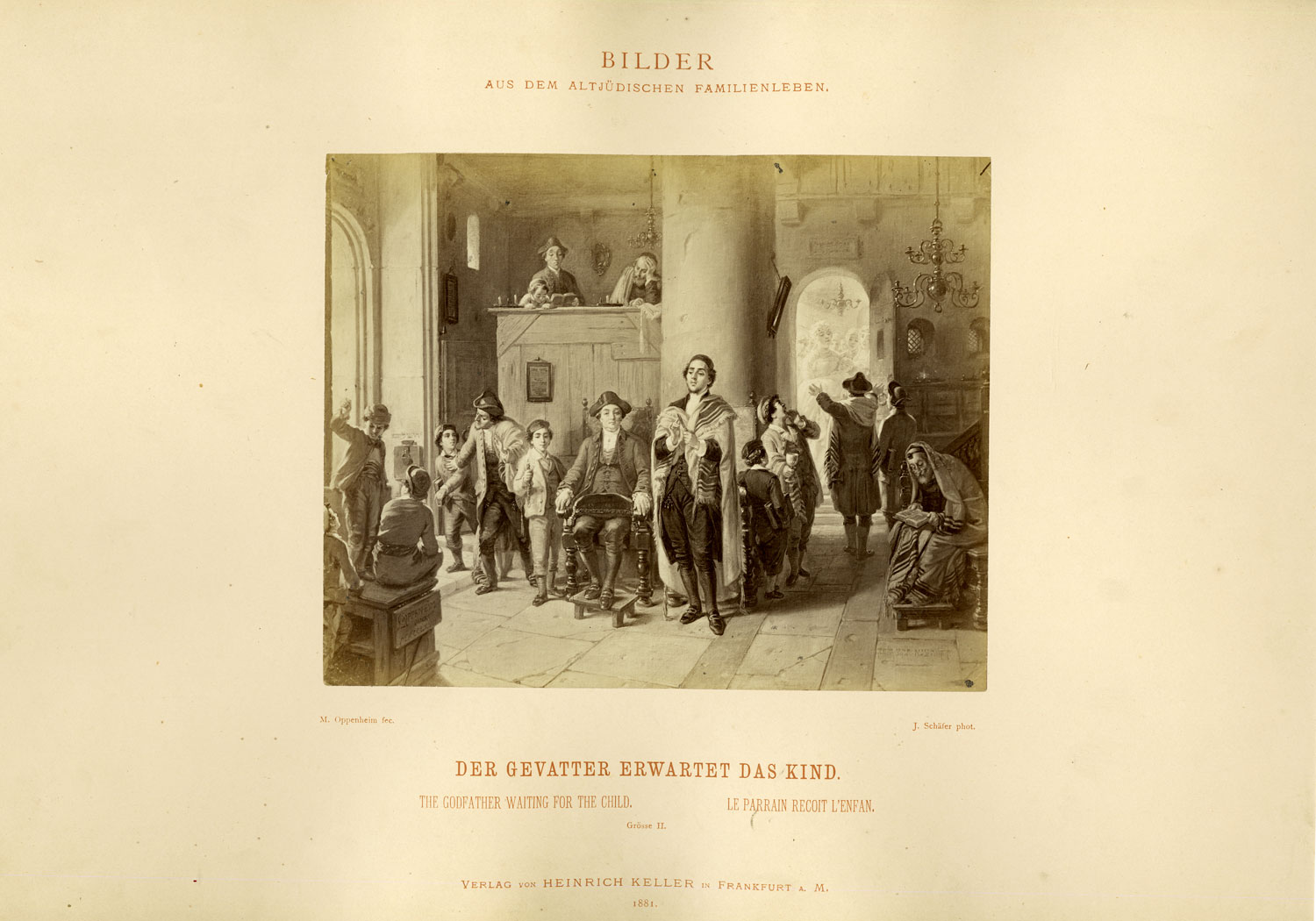Circumcision is a religious rite performed on Jewish males on the eighth day after birth. The rite was commanded to Abraham and his descendants as “a token of the covenant” (Genesis 17:10-14, Genesis 21:4, and Leviticus 12:30) and, as there are no specific rules regarding where the ritual should take place, it can take place in either the home or synagogue. Starting in the tenth century, the godfather (sandek) was responsible for holding the child during the operation. Traditionally, the wife of the godfather carried the child to the circumciser (mohel), while the congregation greeted him with these words: “Blessed be he that cometh in the name of the Lord” (Psalms 118:26). In the synagogue, a special chair for the sandek was common. This was actually a double chair, with space left for the Prophet Elijah, who was believed to witness the ceremony. In Germany, it was customary to take the cloth in which the baby was wrapped at circumcision to later fashion into a binder (belt) for Torah scrolls. Embroidered with decorations and the boy’s name, the binder would be used to tie the Torah at his bar mitzvah and wedding. Thus, the circumcision was physically and artistically linked to later life events.
In this image by the 19th-century German-Jewish painter Moritz Daniel Oppenheim (1800–1882), we see the inside of the synagogue before the circumcision, as the father, godfather, and a crowd await the baby, glimpsed in the doorway. Oppenheim was sure to locate the scene in a synagogue, reflecting the concerted effort made in the 19th century to centralize Jewish ritual in the house of worship, to emphasize its importance, and perhaps to help establish the synagogue as “the Jewish church,” where Jewish rites, much like Christian sacraments, were carried out.
